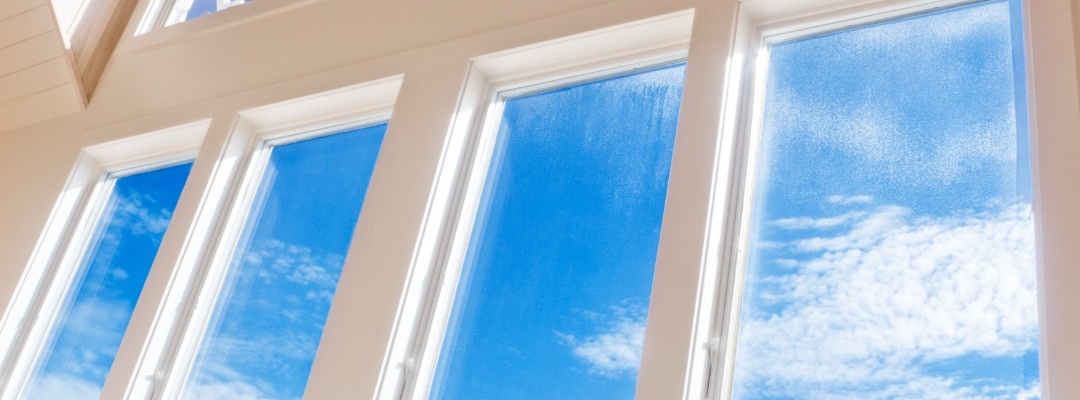Glass is a remarkable material used by humans for thousands of years. From ancient civilizations to modern-day architecture, glass has played a significant role in our lives. Have you ever wondered how window glass, the transparent and versatile material used in buildings, is made? This article will delve into the fascinating world of glassmaking and explore the intricate process behind creating this essential component of our daily lives.
Understanding the Basics of Glass
Glass is a solid material that is typically brittle and transparent. It is composed of a mixture of different elements that undergo a transformation during manufacturing to create a unique material with specific properties. Understanding the basics of glass is crucial in comprehending how window glass is made.
Although seemingly simple, Glass has a fascinating history spanning thousands of years. The art of glassmaking can be traced back to ancient civilizations, with evidence of glass production found as early as 3500 BC in Mesopotamia. Imagine the skill and craftsmanship required to create glass when technology was limited. Ancient glassmakers used a mixture of silica, soda, and lime to create glass at high temperatures. It is awe-inspiring to think about the ingenuity and creativity of those early glassmakers who paved the way for the glass industry we know today.
Over the centuries, various techniques and methods have been developed and refined, leading to the production of high-quality glass that we have today. The history of glassmaking is a testament to human innovation and the continuous quest for improvement. From the ancient civilizations to the Renaissance period, glassmakers experimented with different ingredients and processes to enhance glass’s clarity, strength, and durability.
The History of Glass Making
Glassmaking dates back to ancient civilizations, with evidence of glass production found in Mesopotamia as early as 3500 BC. Over the centuries, various techniques and methods have been developed and refined, leading to the production of high-quality glass that we have today. Ancient glassmaking used a mixture of silica, soda, and lime to create glass at high temperatures.
The history of glassmaking is not just limited to Mesopotamia. It spread globally, with different regions contributing their unique styles and techniques. The Egyptians, for example, were renowned for their exquisite glasswork, often incorporating vibrant colors and intricate designs. On the other hand, the Romans focused on creating glass vessels and decorative objects that showcased their wealth and sophistication.
As time went on, glassmaking techniques continued to evolve. The invention of the blowpipe in the 1st century BC revolutionized the industry, allowing glassmakers to create more extensive and intricate glass objects. The Middle Ages saw stained glass windows rise, with magnificent cathedrals adorned with colorful glass panes depicting religious scenes. Each era brought new advancements and artistic expressions, shaping the history of glassmaking into a rich tapestry of human creativity.
Different Types of Glass
Glass comes in various types, each with specific properties and uses. Window glass, for instance, is primarily made using soda-lime glass, which is solid and resistant to shattering. This type of glass is ideal for windows as it provides clarity and allows natural light to enter while providing insulation against the elements.
But window glass is just one example of the many types of glass available. Borosilicate glass, for instance, is known for its exceptional heat resistance and is commonly used in laboratory equipment and cookware. Its ability to withstand high temperatures makes it a reliable choice for extreme heat applications, such as Bunsen burners and ovenware.
Another type of glass that has gained popularity in recent years is tempered glass. This type of glass is processed through a controlled thermal treatment that increases its strength and durability. Tempered glass is often used in applications where safety is a priority, such as car windows and shower doors. In the event of breakage, tempered glass shatters into small, harmless pieces, reducing the risk of injury.
These are just a few examples of the many types of glass available, each designed to meet specific needs and requirements. From humble window glass to specialized borosilicate and tempered glass, the world of glass is vast and diverse, offering endless possibilities for various industries and applications.
Raw Materials Used in Glass Production
Window glass manufacturing requires specific raw materials that undergo a series of processes to form the final product. Key components utilized in glassmaking include sand, soda ash, and limestone. Let’s look at these materials and their role in the glass production process.
Sand and Its Role in Glass Making
Sand is the primary ingredient in glass production. It is composed mainly of silica, which melts at high temperatures and transforms into glass. The quality and consistency of the sand used can directly impact the final product’s clarity and appearance. The sand is carefully selected, washed, and purified to remove impurities that could affect the glass’s quality.
Soda Ash and Limestone: Key Ingredients
Soda ash, or sodium carbonate, is another critical ingredient in glass production. It helps lower silica’s melting point, allowing the sand to transform into glass at a lower temperature. Limestone, in the form of calcium carbonate, acts as a flux in the glassmaking process, improving the material’s workability and stability.
The Glass Making Process
Once the raw materials are gathered, the glassmaking process begins, involving several stages that transform the mixture into molten glass ready for shaping and refinement.
Melting and Refining the Materials
The first step of the glassmaking process involves melting the silica sand, soda ash, and limestone in a furnace. The mixture, known as the batch, is heated at temperatures exceeding 1500 degrees Celsius until it reaches a molten state. During this stage, any remaining impurities are removed, ensuring the clarity and quality of the glass.
Forming the Glass
Once the molten glass is ready, it is shaped into the desired form. Various glass-forming methods exist, including blowing, pressing, and drawing. For window glass, the molten glass is typically poured onto a flat surface and then rolled into sheets of the desired thickness. This process requires precision and careful control of temperature to create consistent and high-quality glass sheets.
Annealing: The Cooling Process
After the glass is formed, it undergoes a process called annealing. Annealing involves cooling the glass at a controlled rate to relieve internal stresses and strengthen the material. This process is essential to prevent cracking or shattering of the mirror and ensure its durability and resilience.
The Transformation into Window Glass
Once the glass has been formed and annealed, it enters the final stages of the manufacturing process, where it is transformed into window glass, ready to be used in buildings and structures.
Cutting and Shaping the Glass
One of the crucial steps in creating window glass is cutting the sheets into the desired sizes and shapes. Glass cutters and diamond tools are used to score the glass, allowing it to be broken along the desired lines. This process requires precision and skill to ensure accurate dimensions and smooth edges.
The Tempering Process
Tempering is often employed to enhance the strength and safety of window glass. Tempered glass undergoes high levels of heat treatment followed by rapid cooling, creating a state of strong surface compression. This makes the glass less prone to breakage, and in the event of a fracture, it shatters into small, safer pieces, reducing the risk of injury.
Quality Control in Glass Manufacturing
Throughout the glass manufacturing process, strict quality control measures are implemented to ensure the final product meets the required safety and durability standards.
Inspection and Testing Procedures
Visual inspection and various testing procedures are conducted at different production stages to identify defects or impurities. This includes checks for thickness, clarity, and strength. Manufacturers can ensure that only top-quality products reach the market by meticulously examining the glass.
Ensuring Safety and Durability
Window glass is crucial in building construction, providing natural light, insulation, and protection. Hence, safety and durability are paramount. Stringent quality control practices and adherence to industry standards help manufacturers deliver window glass that withstands demanding conditions and provides long-lasting performance.
In conclusion, the production of window glass is a complex and fascinating process involving careful selection and processing of raw materials, precise molding and shaping techniques, and strict quality control measures. Understanding how window glass is made enables us to appreciate this material’s remarkable properties and highlights its importance in our everyday lives.


